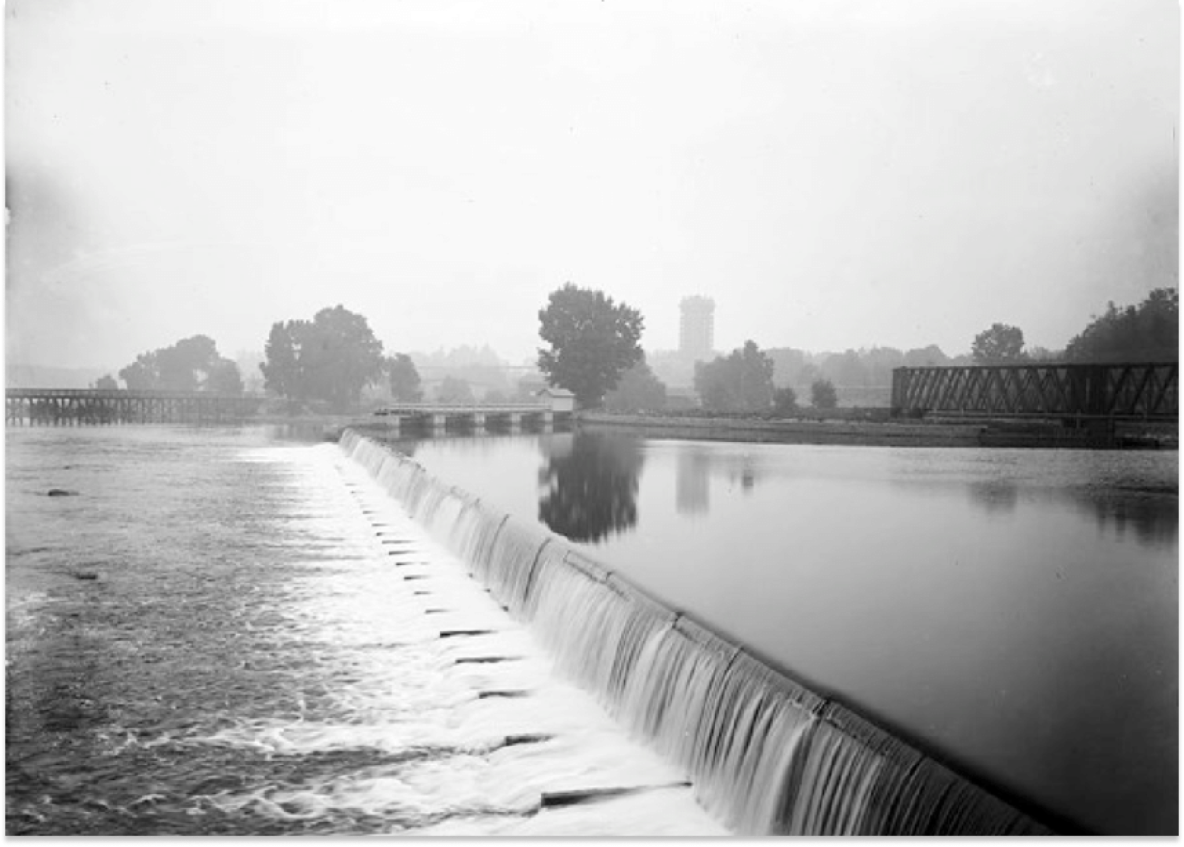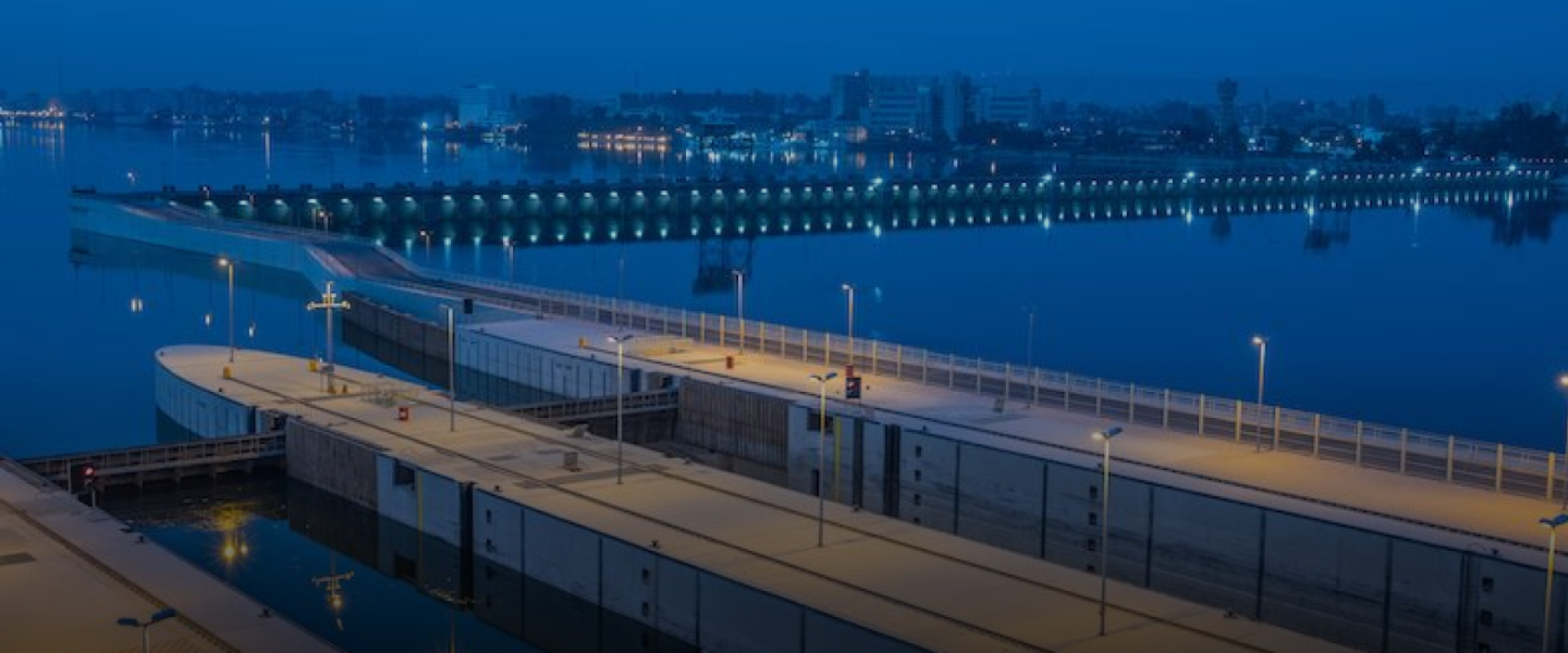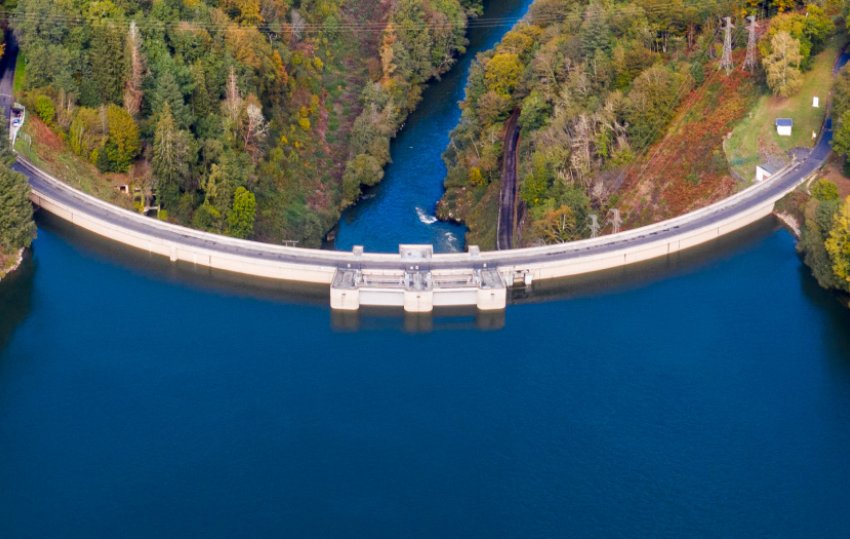
How can we produce energy from water?
Hydraulic energy will play an active role in the energy transition. In the sea, along rivers and even on the roofs of residences, this is how water helps produce renewable energy.
Water, an ancestral source of renewable
Can water be used as an energy source? The idea was tested and approved back in Antiquity! The vestiges of water wheels from the Roman empire show that this civilization relied on water for its development...
For centuries, these water mills provided an inexhaustible supply of mechanical energy. It wasn’t until 1882 with the first hydroelectric power plant on the Fox River, near Appleton in Wisconsin, that water could be transformed into electricity... H.J. Rogers, a local paper manufacturer, had been inspired by Thomas Edison to create a plant on the water. With enough energy to light his home and factory! The first in a long line of hydroelectric power plants to be built in the 20th century.
Good to know: Hydraulic energy is not be confused with hydroelectricity! The first term refers to energy supplied by moving water (waterfalls, waterways, tides, etc.). When converted to electricity, hydraulic energy becomes hydroelectricity.
Hydroelectricity throughout the world in 2024
China is responsible for 30% of the world’s total hydroelectricity production... ahead of Brazil, the United States and Canada.
From water to energy: how does it work?
Hydroelectric power plants, pumped-storage hydropower plants, tidal stream generators, tidal power stations, hybrid solar panels... Here is an overview of water-based energy production solutions.
Hydroelectric power plants: gravitational force
All hydroelectric power plants operate in the same way. The water, which may or many not be held by a dam, descends via gravity through penstocks towards wheels. Depending on the height difference between the fall and the water flow rate, the force of the water turns the wheels, driving a generator connected to the turbines. This force produces electricity that will be sent directly to the electricity grid.
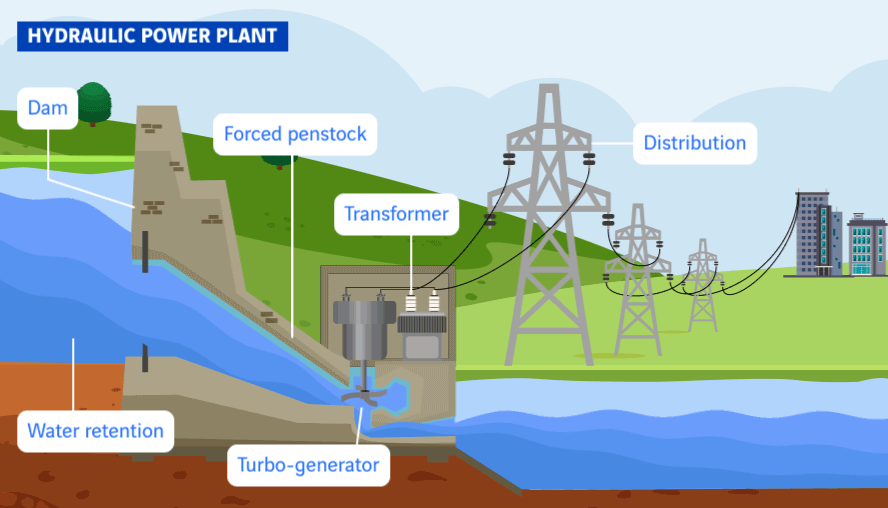
Some power plants, those built in mountainous areas, have a very pronounced height difference, and so a low flow rate is sufficient to produce electricity. These are known as “high head” plants. Others are located in moderately mountainous areas (“medium-head”) or along major rivers (“low-head”): the flow rate then makes up for the low height difference.
Pumped-Storage Hydropower (PSH): a virtuous system with two reservoirs
A pumped-storage power plant features two water reservoirs at different elevations (at least 100 m apart), and is a closed-loop circuit that supplies itself.
To produce energy, the water is released from the upper reservoir towards the lower reservoir through a forced penstock. As with a hydroelectric power plant, the water pressure drives a generator to produce electricity. When excess energy is produced, this energy is used to redirect the water to the upper reservoir via a pumping system. And so it continues.
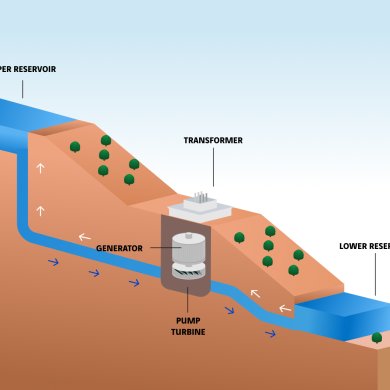
OPERATION OF A PUMPING STATION
When there's a production surplus
We use the energy produced to store it in a basin at a high point.
When energy is needed
This water flows by gravity through a penstock to a turbine (which also acts as a pump) to reach a high pressure, and thus generate electricity (this is called "turbining "*, as opposed to pumping, when the water is pumped up).
*The pumped-storage principle was perfected in Switzerland at the end of the 19th century.
In the Anti-Atlas mountain range in Morocco, the site of Abdelmoumen offers the perfect environment for this type of facility. Supplied by two reservoirs, each with 1.3 million cu. metres capacity, connected by a penstock 5 m in diameter with a 570 m height difference, the Abdelmoumen pumped-storage power plant is one of the South of Morocco’s leading producers of renewable energy.
Tidal Stream Generators, kinetic tidal energy
Tidal stream generators are similar to wind turbines, with one difference: the blades are moved by the force of the hydraulic current rather than that of the wind. Located in rivers or immersed beneath the sea, tidal stream generators are located at a depth of between 30 and 40 metres in areas of strong current (above 4 knots) and can supply several megawatts of electrical power.
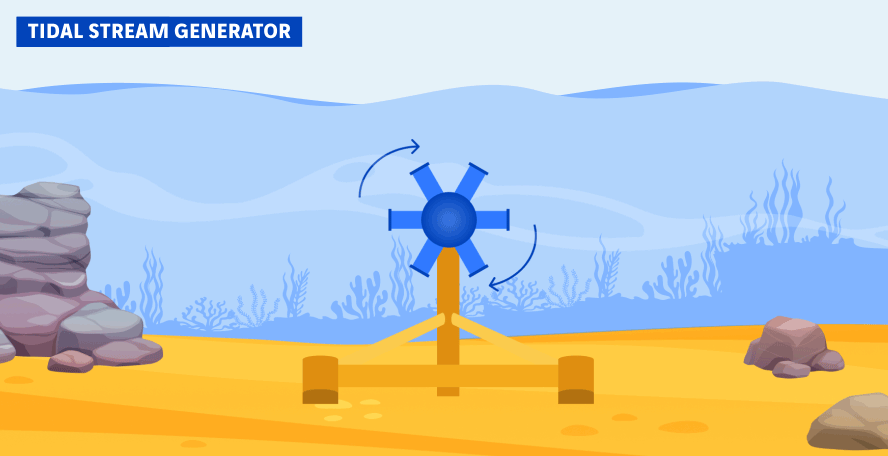
In France there is currently only one tidal stream generator producing electricity. It is located off the coast of Ouessant island, in the extreme west of Brittany. In the north of that same region, two other tidal stream generators are in the test phase on an offshore testing site supported by the European union.
A world first! The first biomimetic tidal stream generator was launched in the summer of 2023 in the Rhône river. Eight metres in length, this facility undulates “like a fish” as it moves in the river currents and produces electricity through an electromagnetic system.
Tidal power stations, using the tide as an engine
Tidal power stations rely not on the force of the current but on that of the tide in coastal areas with high tidal ranges (difference between the high and low tide water level). Its operating principle is similar to that of the hydroelectric power plant since it uses the force of the water fall between point A and point B. Reservoirs are built to hold the sea water and energy production turbines are activated when the water is released to a lower reservoir.
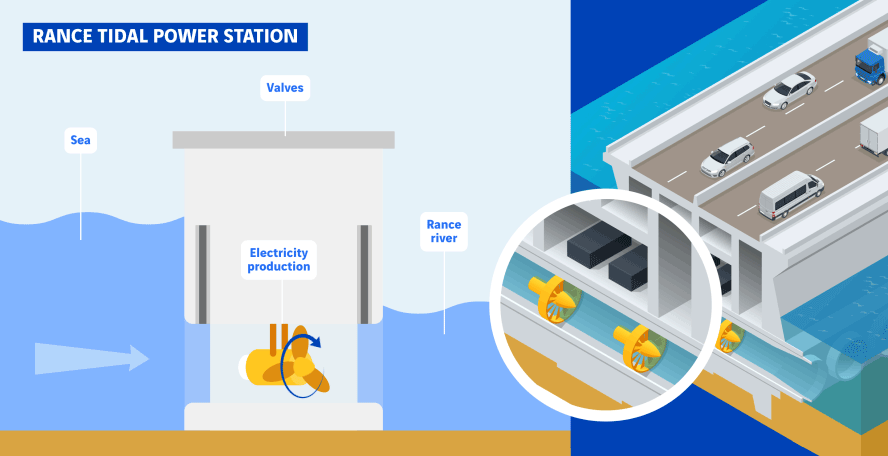
South Korea is one of the leaders in the development of tidal power technology. The Sihwa Lake tidal power station is currently the most powerful in the world. The Asian leader does not stop there: in Inchenon an even larger project is under construction and the Koreans are also looking at the feasibility of new facilities in the Garorim Bay.
France’s only tidal power station, near Saint-Malo. Built in 1966 by Société Générale d’Entreprises (SGE), it is located at the point with the highest tides in Europe (up to 13.5 metres).
Wave power, harnessing energy from the waves
With almost 70% of the earth’s surface covered with water or ocean, the energy potential of wave power is currently under-exploited. Various systems exist - floating or immersed - to harness the movement at the surface of the wave or beneath the current creating it, but many are still in the early development phase. The International Energy Agency (IEA) estimates that wave power facilities could potentially supply 63 GW of energy (equivalent to more than 60 nuclear power plants).
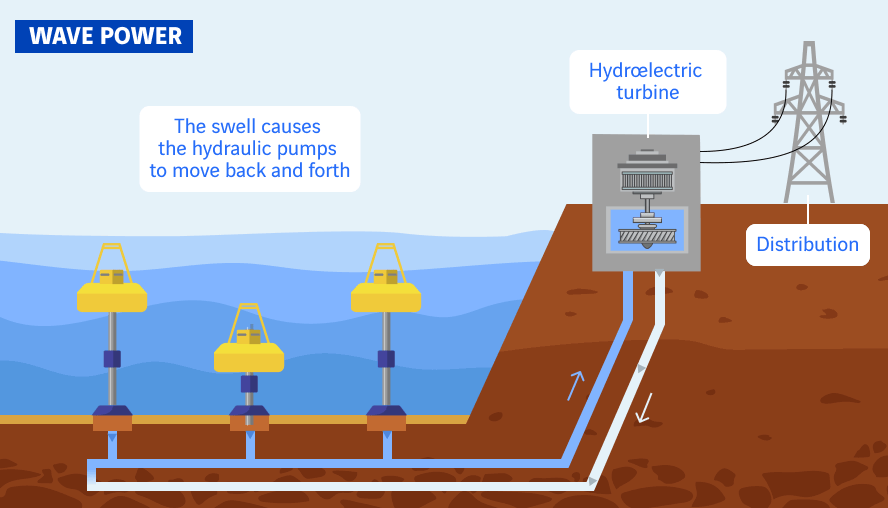
Seawater heat pumping, the sea as a heat regulator
Heating in winter and air-conditioning in summer: the sea is used in coastal homes to enhance the comfort of its inhabitants. With seawater heat pumping, the caloric energy of the sea at the surface is harnessed and enters a heat exchanger that transfers caloric energy from one fluid to another. In this case, sea water is used to heat or cool a fresh water system on the coast. The two water sources never mix and neither one is polluted. Monaco, for example, produces almost 20% of its energy from seawater heat pumping, with 70 production plants.
An energy revolution raining down on us
Solar panels have one flaw, in that they produce energy only when sunshine conditions are favourable. The photovoltaic solar panel intends to solve this issue. This innovation is still in the development research phase at Soochow University in Taiwan, but it aims to revolutionize solar panels by harnessing the energy produced by the rain drops falling from these systems.
Source :
Sources
Statista.com
Most viewed
Vous aimerez aussi
Words from researchers: let's fight stereotypes!
Charlotte, a research fellow at École des Mines, and Erwan, a university professor and researcher at AgroParisTech, talk…
Fondation VINCI pour la Cité: opening the door to others is another way of reaching out!
With some 1.3 million organisations and 2 million employees, France can lay claim to a dynamic network of associations…
Sea water desalination: a solution for turning the tide on the water scarcity crisis?
As water shortages continue causing havoc in a growing number of regions around the world, an age-old idea is experiencing a…
